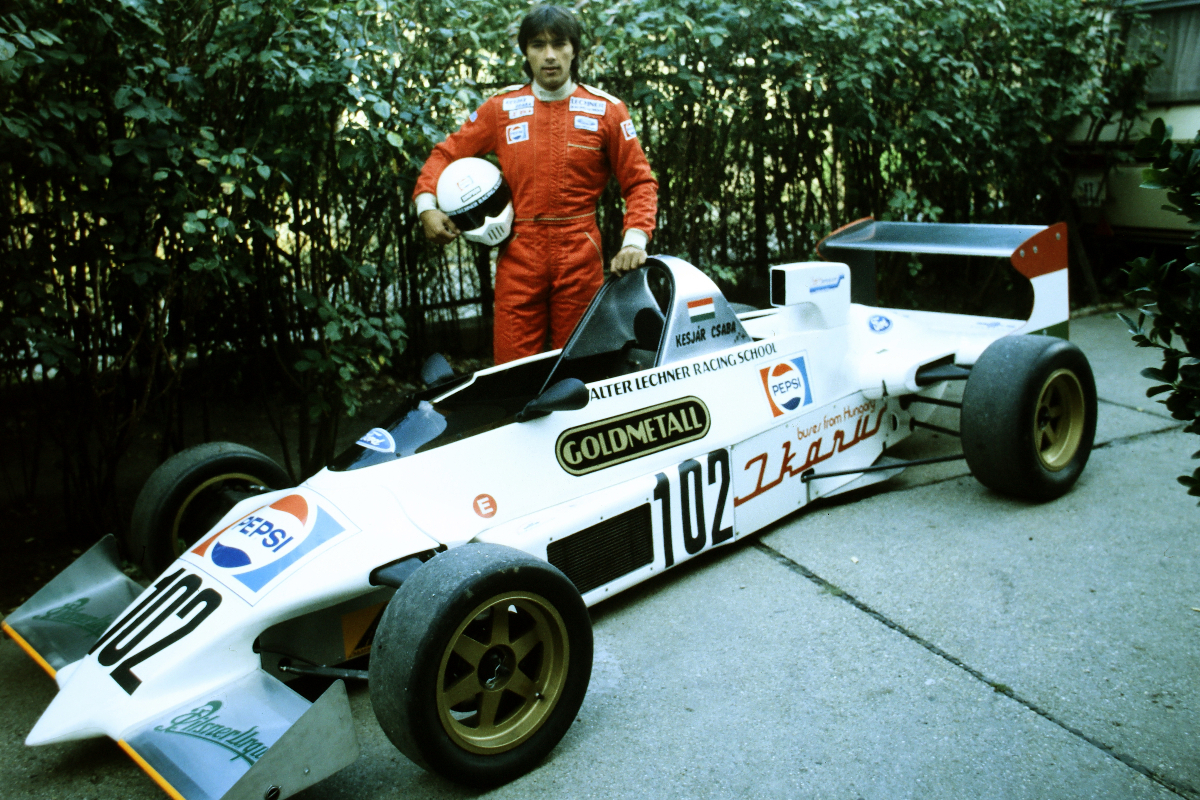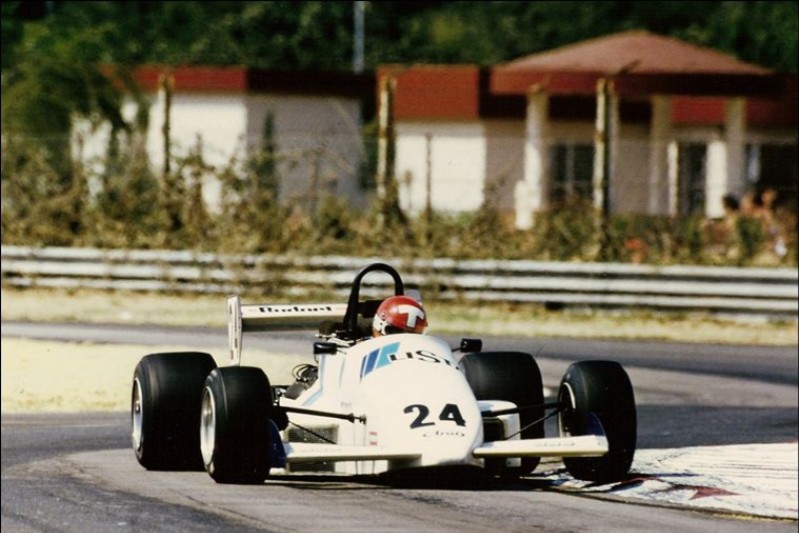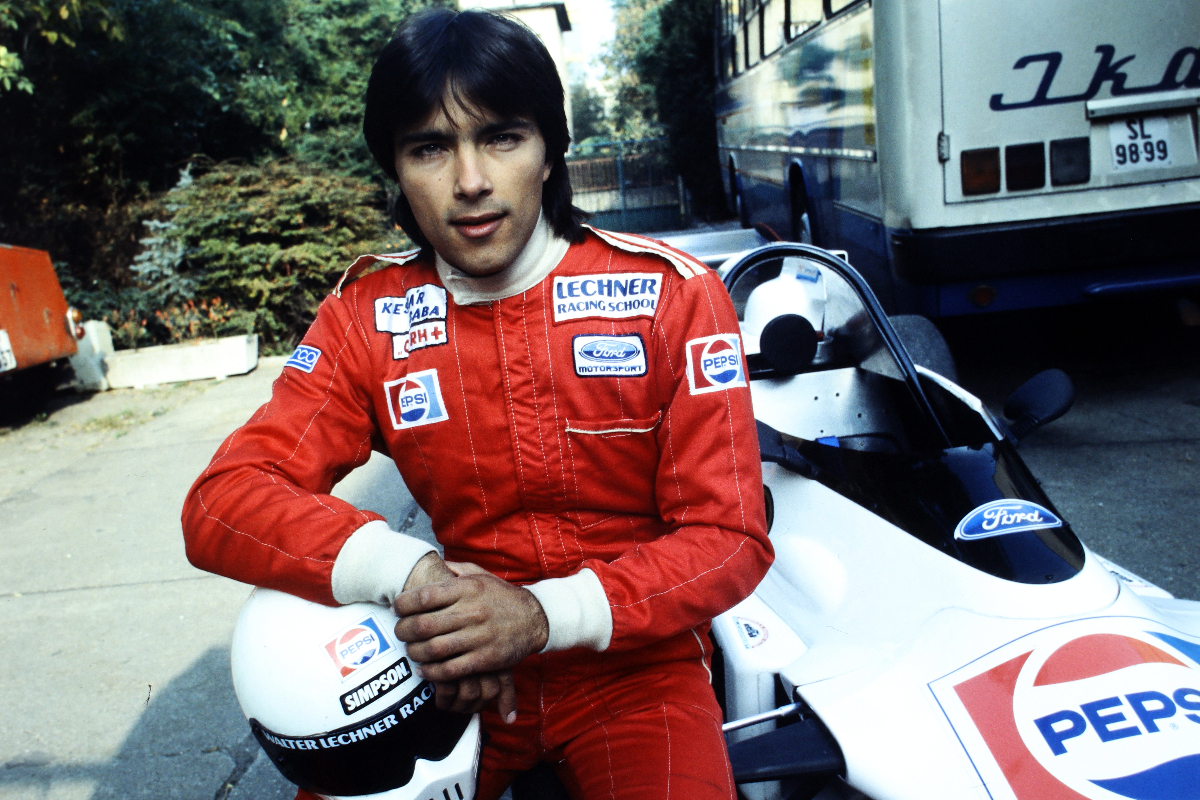
Photo: Fortepan / Béla Szalay
The eagerly anticipated Netflix biopic Schumacher, made with the approval of Michael Schumacher’s family, was released last week. Here’s a few other racing stars whose stories deserve to be told on screen
In recent years, racing fans have been incredibly well-served by the film industry. The first to achieve widespread recognition was the 2010 film Senna, directed by Asif Kapadia, documenting the life of Ayrton Senna. Since then, the lives of Sir Frank Williams, Bruce McLaren and, most recently, Sir Jack Brabham, together with the histories of their eponymous teams, have been captured on film.
While most motorsport films inevitably focus on the glamorous world of Formula 1, single-seaters outside the premier category have not been completely overlooked by moviemakers.
The 2016 film Senna vs Brundle tells the remarkable story of the 1983 British Formula 3 championship through interviews with many of the key protagonists, while Crash and Burn, released in the same year, focuses on the life and perennial struggles of Tommy Byrne (“the greatest driver you never saw” to quote the studio), the winner of the 1982 British F3 title. The Uruguayan film Gonchi, released in 2015, tells the story of Gonzalo Rodriguez as he strived to reach F1.
So with motorsport clearly growing in worldwide appeal, helped considerably by Netflix’s Drive To Survive series, what are the stories from the junior categories that Formula Scout would love to see told on the big (or streaming platform) screen?
Johnny Herbert ENGLAND A tale of what might have been
8th in 1988 Int. F3000, 1987 British F3 champion, 3rd in 1987 Monaco F3 race, 1985 FFord Festival winner
 To the current generation of fans, Johnny Herbert is predominantly known in his role as a television pundit. Many will also be aware of his three F1 wins for Benetton and Stewart. But it is his route to F1 which provides the more compelling narrative.
To the current generation of fans, Johnny Herbert is predominantly known in his role as a television pundit. Many will also be aware of his three F1 wins for Benetton and Stewart. But it is his route to F1 which provides the more compelling narrative.
Herbert was one of the highly-competitive British Formula Ford field in 1984-85. He first came to wider attention by winning the 1985 FFord Festival in an unfashionable Quest, despite having to start his heat from the back row following a spin in qualifying.
Herbert went on to take the 1987 British F3 title driving for Eddie Jordan, before progressing to International Formula 3000 (the Formula 2 of its day) the following year with the same team.
He was dominating the race at Brands Hatch in August before a mid-race stoppage necessitated a restart. Herbert’s Reynard was caught by Gregor Foitek and pitched front-first into the barriers.
The resulting horrific crash came close to not only ending his season but even his career. He suffered severe leg and ankle injuries and was fortunate to avoid amputation.
Herbert fought back in order to make a miraculous and points-scoring F1 debut in 1989 in Rio for Benetton, despite being still being in agony from his injuries. To many who witnessed his career up to his terrible accident, Herbert was arguably an outstanding talent of his generation.
Though he went on to enjoy a long and successful F1 career, his ankles never fully recovered. Who knows how much quicker he could have been.
Kesjar Csaba HUNGARY The tragic story of Eastern Europe’s potential champion
1987 Rheintal circuit race winner, 7th in ’87 ADAC Truck GP F3 race, 14th in ’87 German F3

Photo: Fortepan / Béla Szalay
During the Cold War there was very little intersectionality between the west and east of Europe, and the racing worlds were kept slightly apart too.
While some chassis designs snuck over from the UK to the Eastern Bloc, the same went for drivers who were able to find the finance and a dwelling west of the Berlin Wall to build on the success they had in their home countries.
Csaba was one such example, as he was the son of one of Hungary’s most successful drivers and a champion karter in Hungary in his own right before graduating into single-seaters in the Formula Easter category. He was regularly the driver to beat in Hungary, and against the other nations of the Eastern Bloc he also fared well in the Cup of Peace and Friendship.
He then headed west, tackling Austrian FFord with Walter Lechner Racing and then progressing onto German F3 with Schubel Motorsport. In his first season he won a non-championship race and came 14th in the standings while team-mate Bernd Schneider romped to the title. However he did beat Schneider to getting into one of Zakspeed’s F1 cars, as he got to do a test run at the 1987 Hungarian Grand Prix.
There was the expectation that Csaba would move to the front of the field in his second German F3 season, but it wasn’t the case and he was tragically killed in a free practice crash at the Norisring. His fellow drivers opted not to race that weekend in respect of their colleague, whose popular paddock presence and good looks only add to the ‘movie star’ feel of his career.
Mike Thackwell NEW ZEALAND The teenaged sensation who turned his back on racing
1987 FPacific NZ champion, 1984 European F2 champion, 2nd in 1985 Int. F3000, 3rd in 1979 British F3
 When Mike Thackwell made his F1 debut with Tyrrell in the 1980 Canadian GP at the age of 19 years and 182 days he became the youngest ever driver to take part in the world Championship. To this day, only four drivers have reached F1 at a younger age.
When Mike Thackwell made his F1 debut with Tyrrell in the 1980 Canadian GP at the age of 19 years and 182 days he became the youngest ever driver to take part in the world Championship. To this day, only four drivers have reached F1 at a younger age.
Thackwell had a short-lived debut though, as after a red flag he actually hand over his car to team-mate Jean-Pierre Jarier.
Before then, the New Zealander had enjoyed an absolutely stunning junior career. After a single season in FFord, the then-17-year-old stunned the British F3 paddock by going second fastest in qualifying for debut on Silverstone’s Club layout in 1979.
Described in the programme notes as a “promising newcomer”, by mid-season Thackwell was the main threat to experienced rivals Chico Serra and Andrea de Cesaris, winning five races from June to the end of the season in addition to European F3’s Monza Lottery Grand Prix.
He stepped up to European F2 in 1980 in a works March, before joining the Ralt-Honda team for 1981 (as well as debuting in Super Formula). Thackwell was victorious first time out with Ralt at Silverstone, but a massive accident at Thruxton set his career back. In 1983 he rejoined the team and finished second in the championship behind team-mate Jonathan Palmer, then dominated the next season with seven wins out of 11.
At the end of that year Roger Penske offered him his IndyCar debut, and the briefest of returns to F1, but Thackwell spent the next two seasons in F2’s successor International F3000. He took four wins, and also starred in prototype sportscars.
In 1988 he abruptly turned his back on the sport and walked away for good. Out of the public eye, he has been at various times a teacher, a carer, a surfer, a helicopter pilot and a gold miner.
Given his efforts to avoid the limelight, it is unlikely that he would wish to see himself in a biopic. But the combination of supremely talented teenager, the second tier’s 1980s benchmark and his post-retirement life would be a powerful one.
Ralph Firman ENGLAND The man who built the cars for generations of future stars to shine
Van Diemen cars won 19 British FFord titles, 25 FFord Festival wins, one FRenault Eurocup title, 17 USF2000 titles
 For over 30 years, FF1600 cars produced by Van Diemen in Norfolk were the first step on the ladder for many budding drivers.
For over 30 years, FF1600 cars produced by Van Diemen in Norfolk were the first step on the ladder for many budding drivers.
Founded in 1973 by Ralph Firman, together with business partner Ross Ambrose (father of Australian Supercars champion Marcos), the manufacturer enjoyed immediate success as it won that year’s FFord Festival with Don MacLeod.
From there, the success just kept on rolling in.
For a time in the 1970s and ’80s, any budding Brazilian driver arriving in Europe could be expected to head straight for Firman’s Snetterton factory, and Van Diemen’s growing image also included entering other categories. FF200, Formula Vauxhall Junior, Formula Renault 2.0 and F3 all featured Van Diemen cars at one point.
After selling his company to Don Panoz in 2002, Firman returned to juniors single-seaters with a new company, Ralph Firman Racing. Firman’s MSV F4-013 chassis was used by the BRDC British F4 championship last decade, and his latest FF1600 designs are still campaigned with success in modern FFord racing.
Many notable names have raced Van Diemens on the way to F1, including Senna, Byrne, David Coulthard, Jan Magnussen, Dario Franchitti and Mark Webber.
No other name is as synonymous with junior single-seater racing over such an extensive period as Ralph Firman.
Jason Watt DENMARK The trailblazer who kept on trailblazing
2nd in 1999 Int. F3000, 1995 FOpel Euroseries champion, 1994 British FFord champion & FFord Festival winner

Photo: Stina Husted
Jan Magnussen may have been the Danish youngster with all the attention in the 1990s, but he had a contemporary who also looked destined for F1 at the time.
Watt, three years older than Magnussen, was one of the top karters in Europe at the start of the decade and made his first steps in single-seaters in Danish FF1600 and quickly putting himself towards the front of the order.
He stepped up to FVauxhall Lotus the next winter and won the Winter Series title, then hopped down to FF1800 in the UK for 1994. Two years after Magnussen had been a winning force in British FFord as a factory Van Diemen driver, Watt turned up in a works Vector car and led the manufacturer to the top step of the podium for the first time.
Not only did he break Vector’s winning duck, but Watt claimed the title, the FFord Festival crown and came third in European FFord. A return to FVauxhall the next year led to continental title success, winning half of the races, but for 1996 his single-seater momentum stopped as he joined the DTM in its International Touring Car Championship form.
Other youngsters plucked into the series included Magnussen, Dario Franchitti and a young Juan Pablo Montoya. Watt’s JAS Motorsport-run Alfa Romeo wasn’t as competitive as his rivals’ Mercedes-Benz cars, and he ended up 20th in the standings.
Magnussen and Franchitti both got professional single-seater seats after, while Montoya and Watt moved into F3000 but with just as much attention. They came second and third respectively in their rookie season, and two years later Watt was runner-up to dominant McLaren junior Nick Heidfeld.
Politics had some part to play in the lack of F1 opportunities going for F3000’s leading drivers, but Watt was linked to an F1 test. However that dream was undone by an accident in the off-season that paralysed him from the hips down.
Remarkably, Watt’s racing career continued and it went to new heights. He first appeared in prototype sportscars, then having kept his toe in touring cars while in F3000 was able to find contacts that could enable a return there and in an adapted Peugeot he won the 2002 Danish Touring Car Championship title. He stayed in the series for a decade and raced in the world championship – against fellow disabled trailblazer Alex Zanardi – before retiring from professional motorsport.
His son Noah started following the same path, stunning the world in karting, racing in Danish F4 in 2017 and now winning in Lamborghini Super Trofeo Europe as an official Lamborghini young driver.

